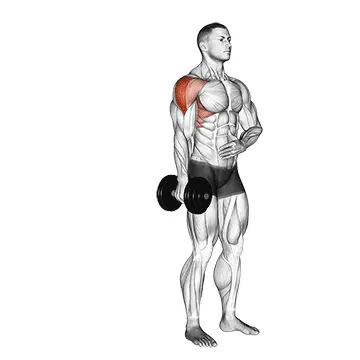Anterior Deltoid Stretch

Muscles Involved
The anterior deltoid stretch primarily targets the anterior deltoid muscles, which are located at the front of the shoulder. This muscle plays a crucial role in shoulder flexion, abduction, and medial rotation. Additionally, this stretch also engages the pectoral muscles and parts of the biceps brachii, indirectly enhancing flexibility and promoting muscle recovery in these areas. By stretching the anterior deltoids, individuals can alleviate tension that can accumulate from daily activities, particularly those involving overhead movements or extensive arm use.
Top Mistakes
- Failing to maintain proper posture: A common mistake is slouching the back or neck during the stretch, which can lead to ineffective stretching and potential injury.
- Using too much force: Some may overexert themselves by pulling too hard on the arm, which can cause straining or injury.
- Not holding the stretch long enough: Briefly stretching without allowing enough time for the muscles to relax can minimize the benefits.
- Neglecting to breathe: Holding one's breath can create tension in the body, countering the intended relaxation and stretching effect.
Execution Tips
- Start in a standing or seated position with your back straight and shoulders relaxed.
- Extend one arm across your body, keeping it straight at shoulder height.
- Use your opposite hand to gently pull the extended arm toward your chest. Ensure the pulling motion is controlled and smooth.
- Keep your shoulder down and away from your ear during the stretch to maintain proper alignment.
- Hold the stretch for 15-30 seconds, ensuring steady breathing throughout.
- Switch arms and repeat to ensure balanced stretching on both sides.
Workouts
The anterior deltoid stretch can be seamlessly integrated into various workout routines. A good practice is to incorporate this stretch after upper body workouts or at the end of any exercise session targeting the shoulders and chest. Aim for 2-3 sets of 15-30 seconds per arm. To enhance flexibility and muscle recovery, consider pairing this stretch with complementary exercises such as shoulder presses, chest presses, and overhead tricep extensions. Including this stretch in your warm-up before workouts can also help prepare the muscles for activity.
Conclusion
Incorporating the anterior deltoid stretch into your fitness routine can provide numerous benefits. By improving flexibility in the shoulder and chest area, it helps to enhance overall range of motion and reduce the risk of injury. Regular practice can alleviate tightness, promote better posture, and support recovery after intense upper body workouts. Ultimately, this simple yet effective stretch is a vital addition for anyone looking to maintain shoulder health and enhance athletic performance.



